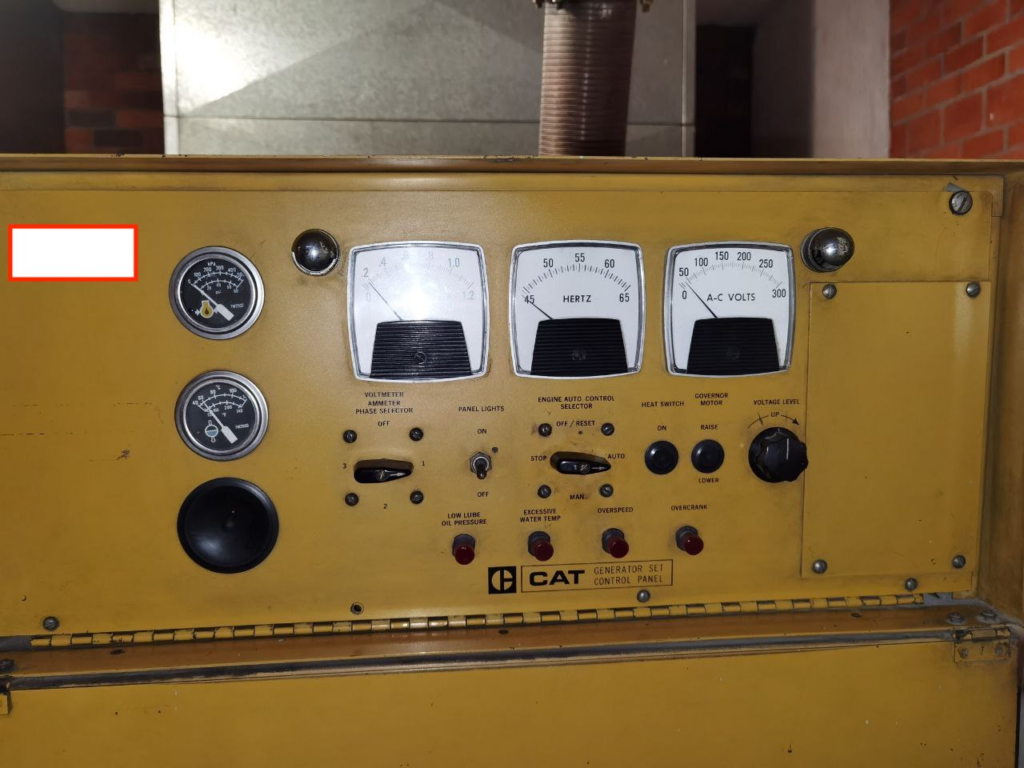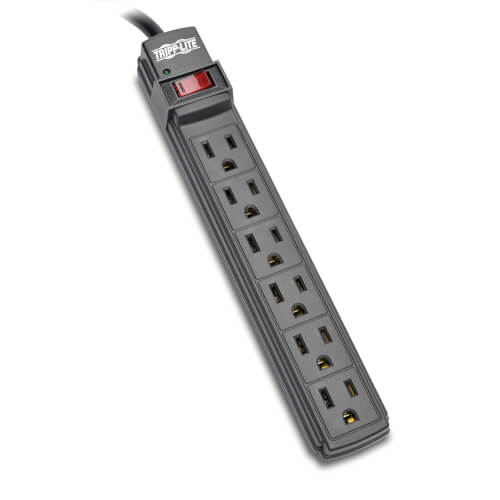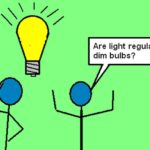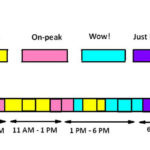Despite the convenience and availability of LEDs, the neon lamp still has a viable position as a power-on indicator as well as use in some specialty applications.
The classic neon indicator lamp with its reddish-orange glow has been used since the early 1890s. Now, the availability, convenience, longevity, and other attributes of LED-based indicators have greatly reduced the situations where this venerable bulb is an indicator light of choice. Despite this, there are still many situations where this “ancient” bulb technology is a viable option and is even preferred.
This FAQ will look at various aspects of this lamp technology and its applications. It will not look at neon signage, a “catch-all” term for signs using neon and other noble gases. Those signs have the same underlying physics principles, but their context, applications, and mechanical and electrical implementation issues are quite different. (If you want to learn more about neon signs, there are references to this topic at the end.)
Q: What is a neon lamp? (It is often referred to as a “bulb,” but lamp is more indicative of the function.)
A: A neon lamp is a gas-discharge light source with a reddish-orange glow (Figure 1). The specific color is determined by the presence of the low-pressure neon gas along with some minute additive gases (in some cases enclosed in the lamp). The lamp has two identical electrodes, usually made of nickel or molybdenum, where one functions as the anode and the other as the cathode.

Q: What is neon, and where does it come from?
A: Neon is a chemical element with the symbol Ne and atomic number 10. It is a noble gas (think back to class: that’s the far right-hand column of the periodic table) and does not bind with other elements. It is a colorless, odorless, inert monatomic gas under standard conditions, with about two-thirds the density of air.
Neon is found in very small traces in both the Earth’s atmosphere and the Earth’s crust. Neon is a rare gas found in the Earth’s atmosphere at 1 part in 65,000; only 0.0018% of the Earth’s atmosphere is neon by volume. It can be produced commercially from liquid air through fractional distillation. Ironically, it is a much more common element in stars and is believed to be the fifth most abundant element in the universe.
Q: How does the neon lamp work, in basic terms?
A: When a high-enough voltage is applied with sufficient current between the electrodes, the lamp produces its characteristic glow in a thin region near the cathode (Figure 2).

Q: What is the primary application of this lamp?
A: In most cases, it is not used for area or spot lighting (illumination). Instead, it is generally used as an indicator that an AC-line power is on (it can be used for DC at comparable voltages) or that some AC-related circuit is powered. In some cases, it is installed as a discrete indicator on the panel of a chassis (Figure 3); in other cases, the indicator lamp is built into the AC-line on/off switch itself of the unit, such as basic as an AC-line power strip (Figure 4), or even an instrument’s front panel.


Q: What is the schematic symbol for the neon lamp?
A: There are several in common use (Figure 5).

Q: What voltages and currents are needed to initiate the discharge and subsequent glow?
A: The numbers depend on various factors such as ambient temperature, the specific gas mix, and even the ambient lighting. When a starting (“initiation” or “striking” voltage) is applied—typically 55-110 volts AC or 90-140 volts DC—the gas ionizes and starts to glow, thus permitting a very small current to travel from one electrode to the other. Once the bulb initiates the discharge as the gas ionizes, the maintaining (sustaining) operating voltage will drop to about 10 to 20 volts below the initial striking voltage. (This is called a “negative resistance” characteristic and leads to some interesting non-indicator applications.) The lamp stays on until the voltage drops below 50 V.
The leakage current through a small neon lamp when off is very low, on the order of a few hundred microamps. The operating current after the lamp initiates the glow is also low for a small size bulb, on the order of several milliamps.
Part 2 looks at the operation of a neon lamp in more detail.
EE World Related Content
Small LED Indicator For Thick Panels
High Voltage Industrial LED Panel Indicators
New 14-mm panel LED indicator light designed for rugged industrial us
Robust LED panel mount indicator series for frequent On/Off cycling
External References
Technical and DIY
- Wikipedia, “Neon lamp” (basic reference)
- Wikiwand, “Neon lamp” (technical with extensive references)
- YouTube, “Lighting the Neon Bulb” (basic hands-on project)
- ch, “Neon glow lamps: more than simple light sources” (lots of DIY projects)
- Hackaday, “The Humble NE-2 Neon Lamp Has A New Trick” (DIY projects)
- Bristol Watch, “Neon NE-2 Circuits You Can Build” (DIY projects)
- Homemade Circuit Projects, “Neon Lamps – Working and Application Circuits” (DIY projects)
- International Light Technologies, Inc., “Neon Lamps: Application & Technical Notes” (technical and applications)
- Data Sheet Archive, “Chicago Miniature NE-2 Datasheet” (detailed data sheet)
- Thunderbolts Project, “V-J-characteristics-discharge-tube-JJ” (Discharge tube graph)
- ThoughtCo-DotDash/Meredith, “How Neon Lights Work (A Simple Explanation)”
- EGL-Neon, “Dispelling the “Inefficient Neon” Myth”
History
- ThoughtCo-DotDash/Meredith, “The History of Neon Signs” (history)
- Hackaday, “The History Of Neon Lights” (history)
- Will Moneymaker, “A Brief History of Neon Lighting” (history)
- Science History Institute “A Blaze of Crimson Light: The Story of Neon” (history)
- Neon Library, “Neon History” (history)
- Yellowpop, “A Brief History of Neon Signs” (history)
Neon signs
- Vida Signs, “Everything to know about Neon Signs: Power Consumption, Usage and much more”
- YouTube, “How Neon Signs Are Made for Restaurants — How to Make It”
- YouTube, “Neon Williams: Boston’s Last Neon Sign Shop”
- YouTube, “Here’s the science behind neon signs”
- Wikipedia, “Neon Sign”
- Tech Times LLC, “Revolutionizing Outdated Tech – LED Neon Signs”
- American Sign Museum
- NeonPlus, “Neon signs—how they work, how they perform and are there alternatives?”
- Wikipedia, “Neon Lighting”
LED on AC line
- Turbokeu, “AC-powered LED “
- ElecCircuit, “Many Simple LED AC mains voltage & current indicator circuits”
- Hobby Circuits, “AC Line powered LEDs”
Other
- EDN, “Cap-Drop Supply: Odd, Interesting, Useful… and Somewhat Dangerous”
- IEEE Spectrum, “The Nixie Tube Story: The Neon Display Tech That Engineers Can’t Quit”







Maybe I’m older than I thought but I recall Neon lamps being around before the 1990’s…..
Starting out, with the first sentence I think it should be 1890s for this “ancient” device.
Neon indicator lamps go back FAR earlier than the early 1990s. Maybe the 1920s?
1990’s????? SO WRONG. I was using NE2’s in 1953
First, miniature neon lamps date back much farther than the 1990s, more likely to the 1920s.
Second, because the ignition voltage is considerably higher than the sustaining voltage, the neon can exhibit a “negative resistance” curve, and hence function as an oscillator, a memory or logic element, a counter, and numerous other functions besides a simple indicator lamp. Several books have been published on these more exotic and creative uses of neon lamps.
So where do we see part #2?? The neon bulb makes an excellent voltage sensitive switch, turning on around 65 volts DC. It also makes a handy negative resistance oscillator, allowing the voltage across a capacitor to rise up until the neon conducts at about 65 volts.Then the bulb switches on and discharges the capacitor, So then the capacitor charges through the resistor until the bulb conducts again.
The most unusual application is as a light sensor. Biased just below conduction in the dark, additional light on the neon will cause the gas to ionize and conduct. Removing the added light will allow it to extinguish. This effect is not commonly known.
Hi, all you sharp readers,
A word of apology for missing that in my editing process. I sincerely appreciate all the feedback—even if it was because I had a miss.
cheers,
Aimee
Hi, William,
You can find Part 2 in the link at the bottom of the last paragraph or…
Just click this: https://www.powerelectronictips.com/the-humble-neon-lamp-down-but-definitely-not-out-part-2-faq/
cheers,
Aimee
Hi all,
I remember going to Radio Shack in my teens, 75 now, and purchasing a NE-2 size neon bulb that had three elements with appropriate three leads. Does anyone remember this product?
I wish I could find it in all my old stuff!